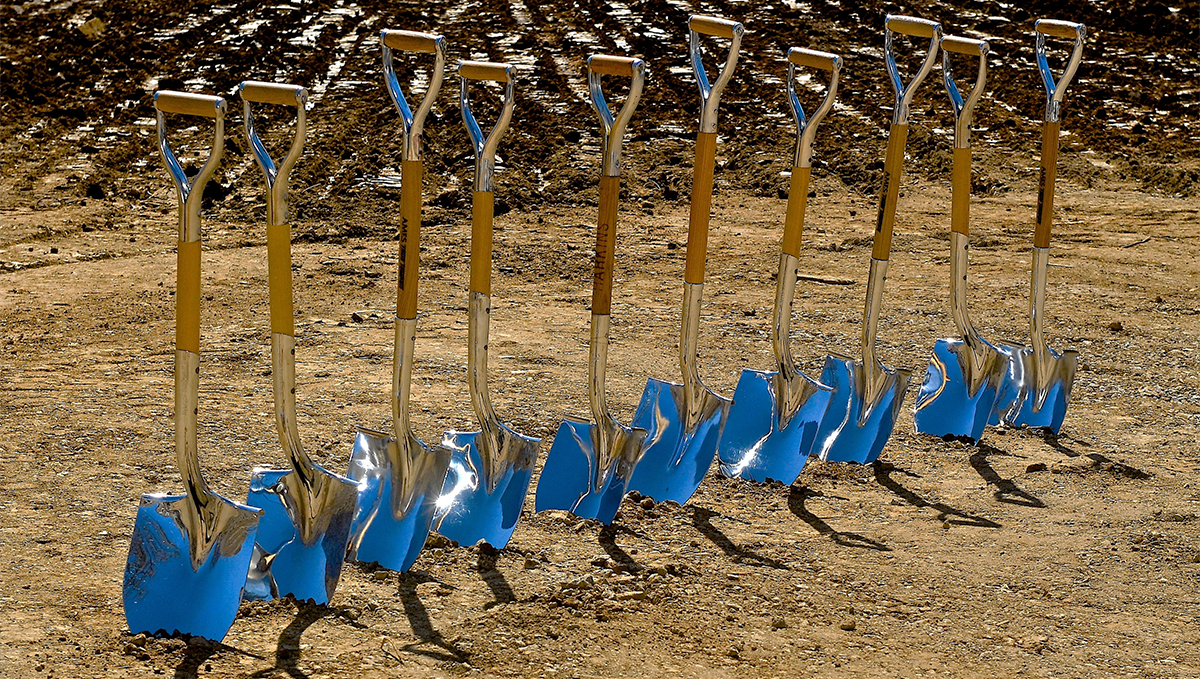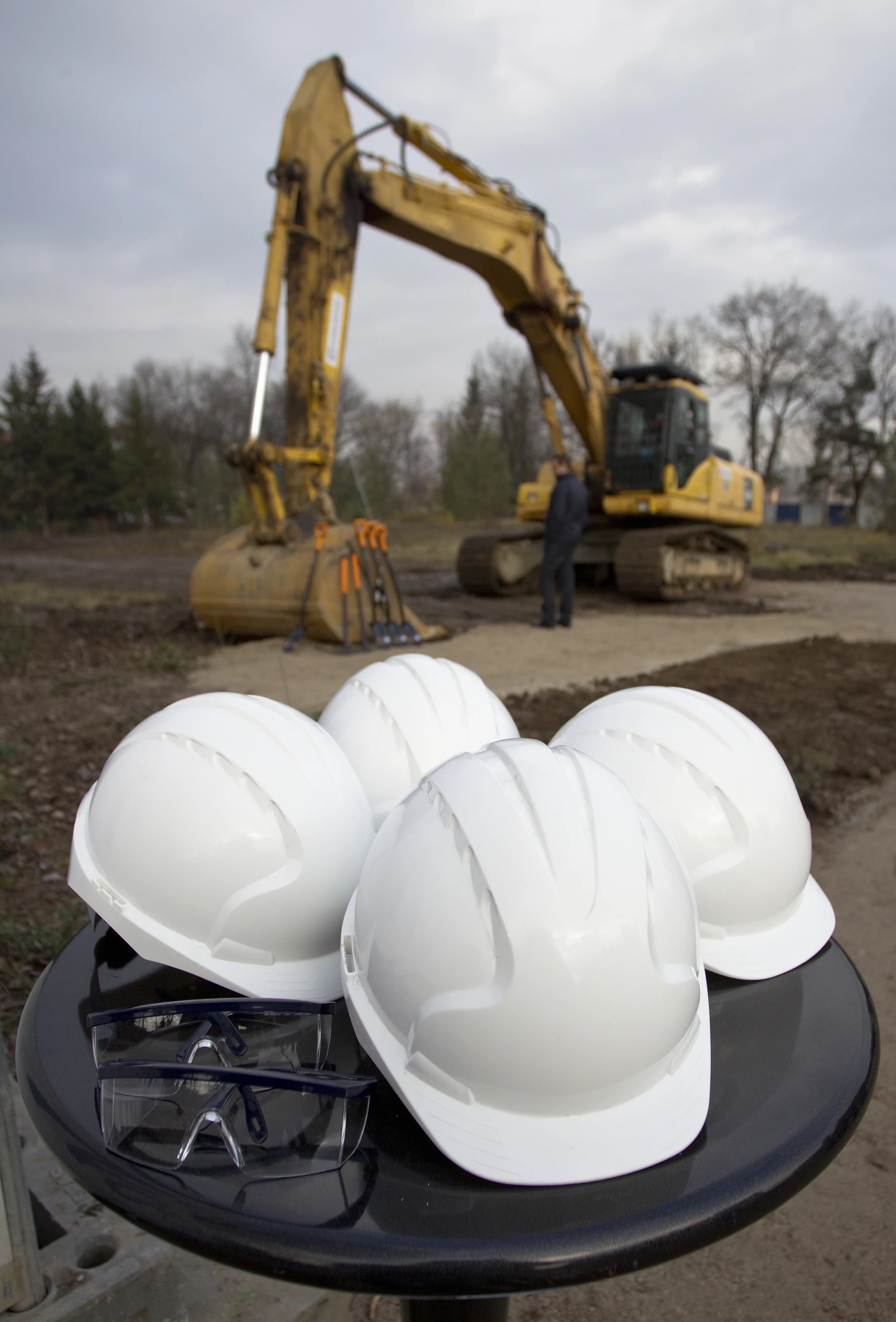Are your priority projects shovel ready?
The phrase “Shovel Ready” has begun to circulate municipal buildings and city halls once again, as yet another phase of unprecedented federal grants makes its way to the municipal level. Shovel ready looms over any department that deals with infrastructure of any kind as cities and towns try to push projects along the long and obstacle laden path towards completion. The definition may seem simple enough, but a deeper and more nuanced look at infrastructure and development reveals that just like any project, being Shovel Ready has multiple layers, all of which require care and preparation in order to reap the greatest benefit for your community.
The term ‘Shovel Ready’ was first popularized in 2009 as part of the American Recovery and Reinvestment Act (ARRA) Stimulus funding program. The term was used to evaluate projects so as to prioritize stimulus funding for projects that would contribute to job growth in a timely manner. This background of the phrase being created in a time of economic recovery explains its resurgence in the present pandemic recovery phase. At the time of its creation, being shovel ready meant that construction would be ready to start in about 90 days, but in the nearly 12 years since its creation, the definition of being shovel ready has never had a completely solid definition.
In its simplest form being shovel ready means that an infrastructure project has all the associated planning, designs, and permits ready for construction to begin shortly. That seems simple enough on paper, but the amount of time, money, and labor that goes into becoming shovel ready cannot be overlooked when trying to reach that milestone. Becoming shovel ready is a long process that requires a lot of diligence, and collaboration. Members of the public and those unfamiliar with the preparation of infrastructure projects may not realize the resources any project, large or small, may require in establishing a design, gathering public input, acquiring any necessary land use approvals, permits, and contracting collaborators to see it through.

Because of the immense nature of becoming shovel ready, it is relatively impossible to have every project in that phase at once as unforeseen obstacles are likely to cause delay while in preparation since becoming shovel ready is contingent on factors that are likely to change. An example of this can be seen now in how current supply chain delays are making certain phases of planning more difficult to finalize. However, despite obstacles and delays the best way to be shovel ready is to have a detailed and up to date capital improvement plan that prioritizes critical need over available funding. This practice will ensure that as stimulus funding becomes available, the projects that are in greatest need will be ready to receive funds. While this is contingent on the number of projects and funding available for designs, working off a detailed capital improvement plan will make you more likely to have shovel ready projects when funding becomes available to begin construction.
It’s no surprise that shovel ready has reentered infrastructure conversations once again. Given the recent flux of grant funding available from the federal government, the lessons learned from the ARRA era are now guiding new spending and planning practices. This can be seen recently with projects using funding from the American Rescue Plan Act (ARPA), and from the Build Back Better infrastructure bill that congress recently passed. As funding from the Infrastructure Bill is beginning to open to communities for applications, evaluating where priority projects are in their planning, and coming up with a detailed plan to move them forward are essential steps in moving your projects towards success.
With so many different moving parts in a project it is completely understandable that hiccups and unforeseen obstacles will hinder the road towards being shovel ready. There are several ways to avoid and manage obstacles as they present themselves in the process. The two most common errors made on the way towards being shovel ready are rushing in without a properly fleshed out plan and beginning large projects that will likely take longer to reach completion than the timeframe of stimulus funds. In other words, moving too quickly, and biting off more than you can chew are some of the most common mistakes when working with stimulus funds that evaluate based on being shovel ready. The best way to manage these errors or avoid them all together is to take your time in planning, and work with an experienced team with a deep understanding of not only the type of project you are working on, but also the context and circumstances of your funding, capital improvement plan, and community.

“Local governments can best be prepared by determining their community’s most critical needs to improve the services they provide. From there, a list of projects can be identified for evaluation of eligibility and timeliness of the available grant, and whether or not these projects align with the communities goals and objectives outlined in their Master Plans, Capital Improvement Plans and Community Initiatives in support of Health, Housing, Education and Public Infrastructure”. Paul Scott, Senior Project Manager, CSS.
“In order for municipalities to maximize funding opportunities, it is important for them to have solid plans in place, including the preparation and design of shovel ready projects. Cities and towns are gaining access to significant amounts of funding opportunities during an unprecedented era of state and federal grant programs. Proper planning and positioning themselves to be prepared for this once in a lifetime funding is critically important.” Jen Thompson, Chief Development Officer, CSS.
At Capital Strategic Solutions our team members have over 20 years of experience in project management, capital planning, grant management, and public outreach. Our experience working in communities across New England has given us a deep and nuanced understanding of the ins and outs of local government. Our experience working with ARRA and ARPA funding allows us to effectively work with our clients to move projects along in a way that is thorough and transparent. Let our problem-solving skills work for you and your communities, email us at info@Capital-Strategic-Solutions.com with your questions, or set up a meeting with us by calling 508-690-0046.


